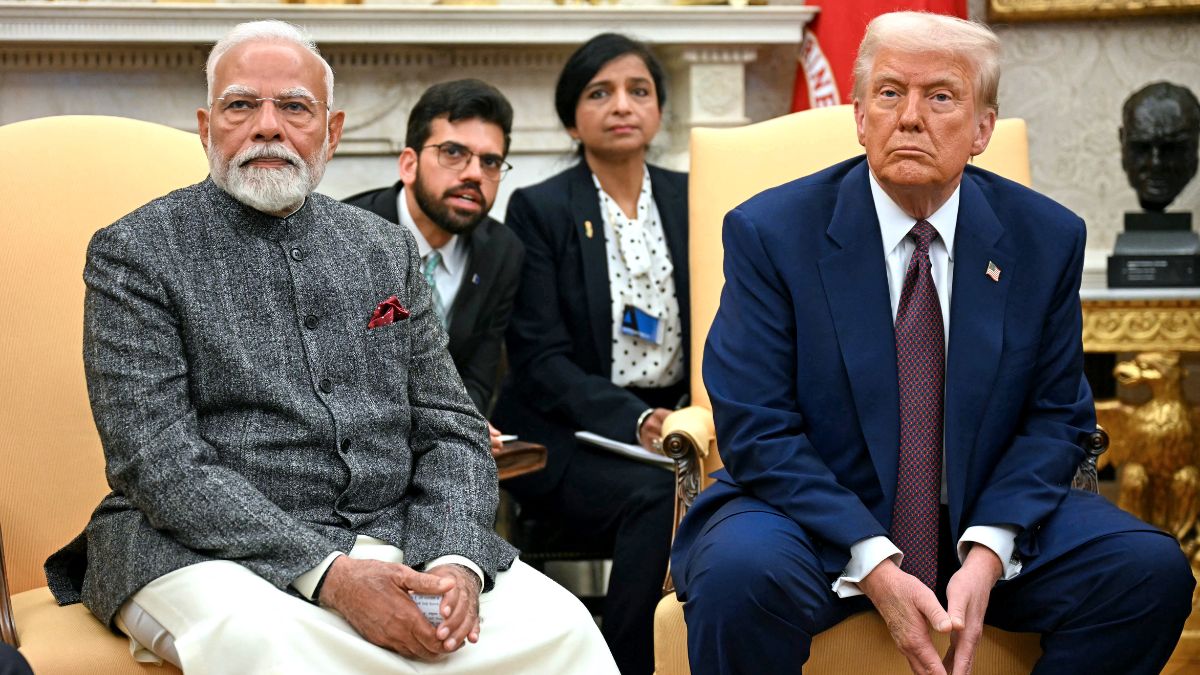After months of analysis, Election Day is here for America and we will soon know whether Democrat Kamala Harris or Republican Donald Trump will be the next US president.
More than 80 million people have already cast their vote in the US and many more are expected to hit polling stations today (November 5) to decide a razor-close election likely to come down to seven swing states: Pennsylvania, Michigan, Wisconsin, North Carolina, Georgia, Nevada and Arizona.
A lot is on the line with this 2024 US presidential election; that’s because both candidates — Trump and Harris have completely contrasting views of the country. As we head closer to the results — don’t expect them before November 6 — here are some factors that could tilt the delicate balance in favour of either Trump or Harris.
The gender factor
This may be one of the most defining factors in this US presidential election. When US President Joe Biden dropped out of the White House race in July, the contest became a girl vs boy battle with Kamala Harris’ entrance.
Harris, the current vice president, is vying to be the country’s first female president and opinion polls show that she is faring well with the women voters of the United States. A USA TODAY/Suffolk University poll taken October 14 to 18 found Harris leading nationally 53 per cent-36 per cent with female voters and Trump leading by about the same margin, 53 per cent-37 per cent, with male voters. As women traditionally vote at slightly higher rates than men, the gender dynamic could give Harris an edge.
Moreover, Harris through her campaign has championed women’s rights, especially abortion, through her presidential campaign. This election will also see 10 states, including Arizona, ask voters to cast their ballot on the issue of abortion rights in the state. This could boost turnout in Harris’ favour.
Pollsters note many Republican-run states in the US have passed stringent laws, restricting abortion, owing to which Trump could lose the all-important woman vote. Notably, contrasting and contradictory statements on the same issue made by Trump and his vice presidential candidate, JD Vance, haven’t helped the Republicans.
However, there’s one key point to be made. In an attempt to counter this trend, Donald Trump has mass appeal in one major voting bloc — young men who lack college degrees.
The former US president has been courting this voter bloc — male voters under 50, who make up about 11 per cent of the electorate across the battleground states. If Trump can court them this election, he stands a good chance of winning the polls and returning to the White House.
Immigrants and the Puerto Rican factor
A divisive factor throughout the US presidential campaign, this could flip the script on either candidate.
Trump has bet on the issue of immigration, using border control as one of his main planks to attack Kamala Harris and the Democrats. Polls suggest voters trust Trump more on immigration, with one such survey showing that the former president has a 15-point lead in voter confidence in managing immigration. This advantage positions him as the preferred candidate on border and security matters.
However, there’s one issue that could turn it around for Trump. Racist jokes made by comedian Tony Hinchcliffe during Trump’s New York Madison Square Garden could turn the tide in favour of Kamala Harris.
At the rally, Hinchcliffe referred to Puerto Rico as a “floating island of garbage”. This could be a problem for Trump as the Puerto Rican voter bloc is significant in the US. For instance, in the battleground state of Pennsylvania, there are an estimated 615,000 Hispanic voters, which comprise Puerto Ricans.
A Sunday poll by Noticias Univision and YouGov shows that Harris leads Latino voters in Pennsylvania. Moreover, the same survey found that most Pennsylvania Latinos, including Puerto Ricans, were offended by Hinchliffe’s joke – 67 per cent of respondents said it was “more racist than humorous,” including 71 per cent of Puerto Ricans.
Anti-incumbency
The one main factor that many believe favours Trump is the general feeling of angst against Joe Biden and his presidency. Many in the country aren’t happy with the direction that America is veering towards. For instance, a Gallup poll conducted in October revealed that only 26 per cent of respondents were happy with the things are going in the US, compared to a whopping 72 per cent who were dissatisfied.
The same survey also revealed that 62 per cent of people believe that the economy of the US will worsen, while only 32 per cent think it will get better.
This antagonism with the Biden presidency could help Trump and be a problem for Kamala Harris, despite her many efforts to distance herself from the current administration’s policies.
Money matters
Donald Trump may be richer than Kamala Harris. However, when it comes to raising money during the presidential campaign, he lags behind his Democratic rival.
Harris has raised more since becoming the candidate in July than Trump has in the entire period since January 2023, a Financial Times analysis reveals, which also noted that her campaign has spent almost twice as much on advertising.
Ad-tracking firm AdImpact has shown that until November 1, a whopping $10.5 billion has been spent on campaign ads in the 2024 election cycle, on races from the president down to county commissioner. Democrats have outspent Republicans, $5 billion to $4.1 billion, from the beginning of the cycle, starting in January 2023.
This could play a major role in a neck-to-neck- race that will ultimately be decided by voters in swing states currently being bombarded by political ads.
We shall have to wait and see until the polling concludes to see if voters go the red or blue way. But one thing is certain, this US presidential election will go down in history as being one of the tightest races.
With inputs from agencies


)
)
)
)
)
)
)
)
)



